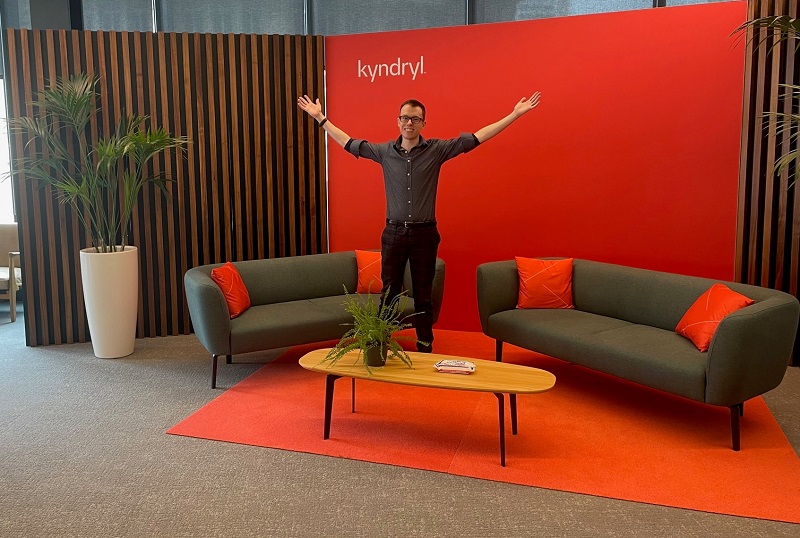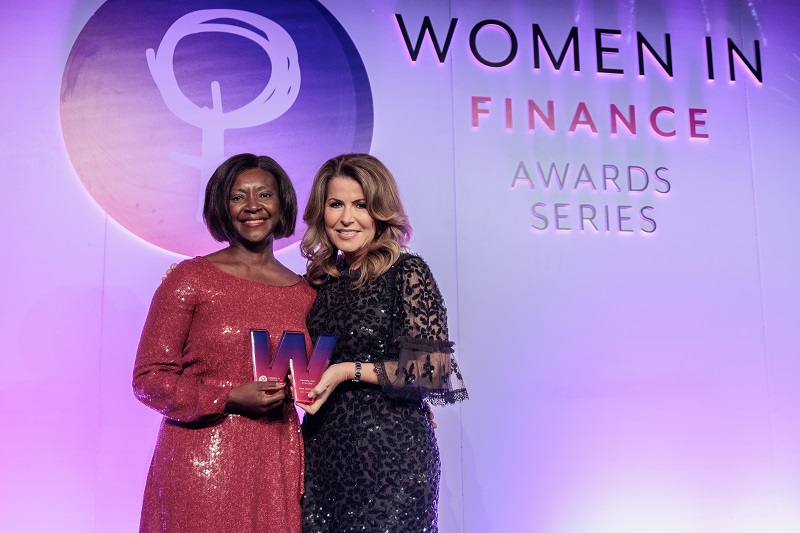Can you tell us about your journey and experiences that led you to become an LGBTQ+ advocate and a role model for others?
Growing up in a small town, I didn’t see a diverse representation of people, and the LGBTQ+ people I did see faced discrimination. They say that “you can’t be what you can’t see”, and this phrase really resonates when it comes to diverse representation both at home and at work.
Role models are everywhere, not just at executive levels, and if people can’t see LGBTQ+ people across different levels of the business, they may feel they can’t aspire to those positions either. By being an LGBTQ+ role model, I want to help other LGBTQ+ Kyndryls to feel a sense of belonging with other people they can relate to.
In your opinion, what are some of the key challenges faced by LGBTQ+ employees in corporate environments, and how can companies address them effectively?
When a supportive and inclusive environment is created, people no longer need to feel anxious or stressed, allowing them to direct their energy to creative thinking and problem-solving, increasing productivity and workplace satisfaction.
While we’ve come a long way in our support for the LGBTQ+ community, we still have a long way to go. It’s important to remember that despite the bright colours and celebratory atmosphere, Pride started as, and still is a protest.
The first Pride was not like the parades we see around the world today – it was a march, marking a year since the 1969 Stonewall Uprising. The uprising saw several community-led rebellions against targeted harassment by the police, the first of which started with a police raid on the Stonewall Inn in New York City.
Unfortunately, some corporate workplaces are still not welcoming, safe spaces, and LGBTQ+ employees face discrimination. Companies can help to address these challenges by building inclusion networks in the organisation. Importantly, those networks need to comprise not just LGBTQ+ identifying members but also visible and supportive allies to amplify the network’s message.
A balance must be struck to ensure LGBTQ+ members are engaged meaningfully and authentically whilst given sufficient recognition, resources, and support not to place the burden of “fixing” discrimination on those who experience it.
What initiatives or programmes have you been involved in at Kyndryl to foster a more inclusive and supportive environment for LGBTQ+ employees?
As Kyndryl’s UKI LGBTQ+ KIN Chair, I’ve worked alongside our fantastic local and global teams to launch several programmes to enable employees to feel part of an inclusive, supportive work environment. This has included elevating the profile of our LGBTQ+ talent, creating confidential support channels, and providing education and enablement for allies to become visible advocates for the LGBTQ+ community. Despite being a new company, we’ve accomplished a lot in a short time, and I’m very excited about what’s still to come.
KIN stands for Kyndryl Inclusion Network, and we aim to embed inclusion, diversity and equity (ID&E) in every aspect of the business. We are empathetic and devoted global citizens striving to make the world a better and more inclusive place for our employees, customers and communities.
How do you approach allyship and building strong connections with colleagues to create a sense of belonging for LGBTQ+ individuals within the workplace?
For me, there are three core components to allyship and building a sense of belonging within an organisation; I always encourage people to be curious, active and vocal.
To be curious, sharing and listening to personal stories is key. Initiate open conversations about what it means to identify as LGBTQ+, and educate others on what bullying, discrimination, and microaggressions look like and how we can encourage an inclusive culture at work.
To be active, hold D&I meetings, support groups, and relevant events; businesses can be active, giving employees the confidence to start conversations around LGBTQ+ issues and demonstrate visible and active allyship.
To be vocal, amplify the voice of the LGBTQ+ community, and ensure leaders openly talk to their teams about discrimination, bias, and current issues within the community, equipping employees to call out discriminatory behaviour.
How important is it for companies to celebrate events like Pride Month and demonstrate their support for the LGBTQ+ community? What are some meaningful ways companies can engage with Pride Month beyond token gestures?
Pride Month is a time for LGBTQ+ people to come together in celebration of love, identity, and resilience, reflecting on the progress that the community has made and recognising the work still to be done. People are a business’s most valuable asset, so ensuring everyone feels accepted should be a top priority.
Pride Month gestures can sometimes be met with scepticism and viewed as “rainbow-washing”, but when activities are done authentically, it’s an important opportunity to shine a light on LGBTQ+ employees, how the business supports them, and re-affirm their commitment to supporting LGBTQ+ employees all year round.
Organisations should actively engage their LGBTQ+ populations in genuine, meaningful ways to ensure that they are seen as open, accepting, and welcoming for people of all sexualities and gender identities, providing positive role models for employees who are considering coming out at work.








